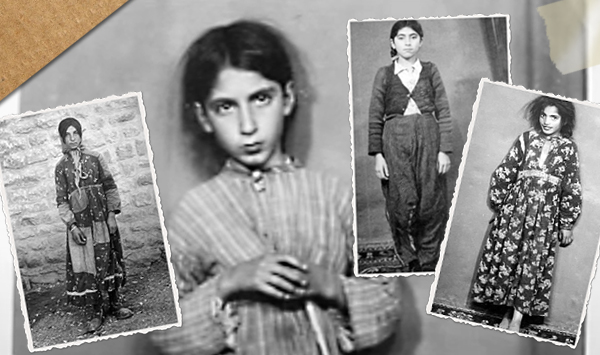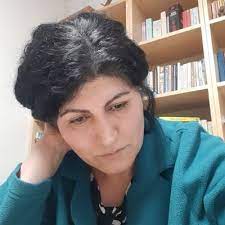Türkçe Nupel | Français | English
The factories of the colonization educational industry, with their machinery for the destruction of identity and culture, produce norms and values denying everything that belongs to the place and the civilization of the colonized. These factories in the service of the invaders educate and train future volunteer executioners who join the ranks of the colonizers. In the Turkish example, Kurdish children, exploited talents kneaded in the dough of Turcity, were used as raw material and put to work.
The assimilationist action of a Sıdıka Avar was continued by other women such as Türkan Saylan – to name only one. These factory-schools spread the seeds of shame, self-hatred in the subconscious of young generations torn from their roots.
Rather than resembling schools, these factories – from first grade to university – resemble garrisons. 55 of the 59 grade schools and regional boarding schools (YİBO) opened between 1962 and 1973 in Turkey are located on Kurdish lands. We learn that in 2012, 44% of these schools were located in Kurdistan.
These articles provide a good illustration of the various strategies employed against the mosaic of populations in Turkey, in order to reduce it into the Nation-State, including the violent or insidious dispossession of one’s language.
This series of articles was prepared by Suna Arev and is published in Nupel. This first part provides the context, prior to entering behind the walls of the Institute for Girls in Elazığ.
Follow this link for the full series
Sıdıka Avar, Atatürk’s missionary and her preys in Dersim

Yeter Karataş was born in Dersim in 1940. While still a child, she was recuperated by Sıdıka Avar who was pacing the region on horseback, from Meydanlar to Pülümür, gathering up girls. In fact, she is one of her prey, subjected to education in Turkish in the Institute for Girls in Elazığ. But she is not aware of this…
Speaking to me about Sıdıkaa Avar and Atatürk who oriented her life, she does not spare them her affection, respect and praise… For her, the time at the Institute for Girls in Elazığ was the happiest and most secure period in her 81 years of life. She is still filled with endless gratitude for this period and these people. Alghough her life in Germany, where she arrived in 1972, was a thousand times better than that in the village, between each sentence, flow the words of regret “ah, Elazığ, that Elazığ…”
En parlant de Sıdıka Avar et d’Atatürk qui l’ont orientée, elle ne manque pas d’affection, de respect et de louanges… Pour elle, l’époque de l’Institut des filles d’Elazığ est la période la plus heureuse et sécurisante de sa vie de 81 ans. Elle est encore aujourd’hui dans une reconnaissance infinie envers cette époque et envers ces personnes. Bien que sa vie en Allemagne, où elle est arrivée en 1972, fut mille fois meilleure que celle du village, entre chaque phrase, découlent les mots de regrets “Ah, Elazığ, cette Elazığ”…
Where is this Elazığ? One tooth away from Dersim… If you were to climb up to Harpout1and stand next to Battal Gazi2as sculpted by Nurettin Uygur, looking ahead you would see the Munzur mountains. And if you lent an ear, you might hear the grievous cries for help. Because, over there, there are still unburied dead ones and dragons painted over with lies still roam…
If your eyes were to glide across Elazığ and you were to look at the heart of the town, you would see the gallows set up on Buğday Square… Seyid Rıza will be hung there, the messenger of god, with his white beard….3. Seven gallows will be set up and Dersim’s leaders would still be hung there… Imprinted on the days before the apocalypse… And they did not leave without being seen first. Their hanging was proclaimed throughout Elazığ, its streets, the mountains. “Come see the bandits, as an example.” The murderous spectacle put on by Devlet‑i Aliyye….4

Seyid Rıza and his sons
From the village of Pelte, Dursun’s family went. Following such an order from on high…Those to be hung are Qizilbash, with no religion, no book, no prophet. With the rope placed around their neck, these seven will offer the key to paradise on a golden platter, to be hung from Sunni Islam’s slate.
Dursun, a practicing believer and landowner, is a respected person in Elazığ. When famine struck in Dersim and the entire region of Kuzuova was filled with cattle without masters, one heard: “The infidel’s goods are halal!” Everyone took advantage.
Dursun says: “The news was problaimed all over Elazığ so we left and we attended. A crowd on Buğday Square. Seven men hung. Seyid Rıza was old, with a white beard. I looked at them, one by one. They were people like us.
I stood longer in front of a young one…5Even now that my hair is so white, never have I seen a young one like him. Such a face, such eyes, I told myself, a Qizilbash, all right 6but how could they sacrifice such a man? Since that day, Hüseyin’s image has not left my dreams…”
Like us? Us, the serfs of Dersim who work in Dursun’s fields for a bit of bread… Dersim, one tooth away from Elazığ…
My grandfather Gollo Turso carried charcoal by horseback for the ovens of the Armenians in Harpout. This is how he acquired considerable lands. The rest was through looting. His first gunshot occurred that way because you cannot trust the Ottoman. You cannot turn your back on the Ottoman. When conversing with the Ottoman, you never remove your finger from the trigger…
That Ottoman shed the blood of 40 thousand Qizilbash. He has moved forward since the 1500s by shedding blood. Ottoman means blood, Ottoman means massacres, Ottoman means heads filling wells…He is terror, cruelty, the Ottoman is the terrestrial version of hell.
But Dersim is reassuring, it has its august and divine river with abrupt rockfaces. The Ottoman does not enter there easily in order to shed red blood. Over there, Gilgamesh7still walks in his Quraych outfit 8. There are virginal living stories of the Sumerian mythology, still intact.
Now the glorious and victorious Republic is established… The Republic brings hope for Dersim’s residents. The Republic means no longer being killed, it means serenity, bread, living without fear… The Republic means the Ottoman sword, buried. This is what Dersim’s residents hope.
The fingers pull away from the triggers, there is no longer need to protect one’s self…There is no rebellion, no revolt against the Republic at that point. They give to the State soldiers as well as taxes…
But this is not enough for the Republic which is a continuity of the Ottoman. The massacre of Armenians on the roads of Deyrizor was a success. After the Armenians it was the Qizilbash’s turn…
The bloodied hands of Enver, Talat and Cemal 9are held by Atatürk. Dersim must be cleansed in the name of the Turk. The plans begun in the 1920s are put to execution in 1937, 1938. Although official declarations speak of 13 160 dead, and 1 200 deported, results for the oppressed people were much worse.
Atatürk’s adopted daughter, Sabiha Gökçen, the Republic’s first woman pilot of a combat plane, rains down bombs on the people of Dersim. This woman pilot’s tragedy, is that she is an Armenian orphan… (Official history books speak of a war but do not raise the question, against which country was this war conducted?)

Atatürk and Sabiha Gökçen
Atatürk, a national inspiration for Hitler. He plans to finish the “job” by assimilating those he hasn’t managed to kill… He was an intelligent man, to the point of figuring out the best way to annihilate a people, to destroy its roots: start with its women.
Sıdıka Avar is a teacher in Istanbul in the Cihangir neighborhood. She is a devoted woman who lost her parents as a child and raised her brothers and sisters. She is brave to the point of teaching prisoners how to read and write in Izmir. Following investigations, Atatürk discovers her and sends a convocation. It is said that when she appeared before Atatürk, Sıdıka was trembling like a leaf.
Atatürk is said to have spoken in these terms to the tiny young woman: “I need missionaries like you.” Then, he explained his idea. The young teacher was to go East. She was to assemble and reap girls who did not speak Turkish. She was to melt them into the crucible of Turcity. And then, she would send them back, like rays of light (!) into the villages.
Thus was Sıdıka Avarimprinted with the stamp of Turcity by none other than Atatürk himself. The assimilation would be perfect. Because this label was all-powerful.

Sıdıka Avar collecting girls…
Sıdıka Avar arrived in Elazığ. Elazığ, one tooth away from Dersim… Next to Paramaz, Elazığ is the most important fortress of fascism. Sıdıka went from from to village on horseback, collecting girls between the ages of 6 and 12, most of them orphans. The dough is most malleable between those ages.
When the children arrive at the Institute for Girls in Elazığ, as a first step, their long and lice-ridden hair is shaved off. (Official books don’t ask why these children were orphans and lice-ridden.) They are washed with sweet-smelling soaps, dressed in fine, clean dresses. They are fed, hot meals, morning, noon and evening. Governesses take on the role of tender and protective mothers. The girls are happy, secure…
Even more to the point, without these good persons, they would no longer survive. And everything is free…T he only thing expected of them is as follows: “Speaking Kurdish is forbidden and dangerous. The most beautiful language in the whole world is Turkish, the most wonderful religion is Islam. Turks are Allah’s most beloved servants. Atatürk is our greatest savior”…
No doubt that without Atatürk, the entire population of Dersim would have died…
(To be continued)
Follow this link for the full series
Translation by Renée Lucie Bourges
Support Kedistan, MAKE A CONTRIBUTION.




